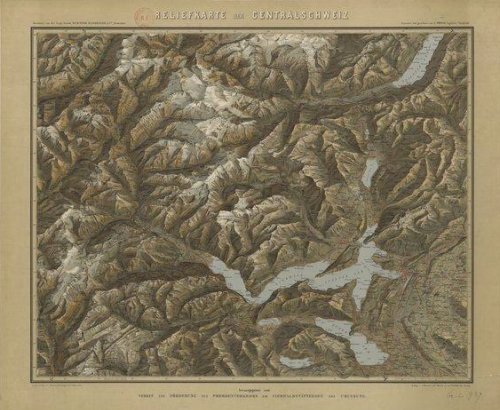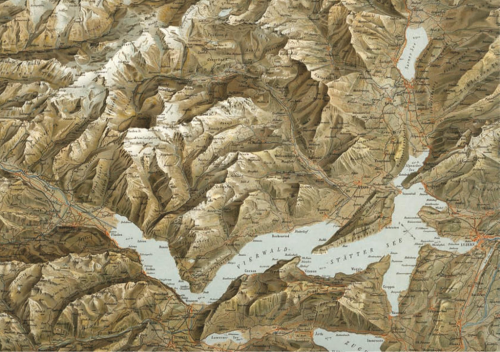The basis of many outdoor recreational maps is a good topographic map. If the recreation makes use of a mountain and it involves descending the slopes whether by ski, snowboard or mountain bike then the interest is in the mountainsides and a planimetric map just doesn’t provide the right aspect. Most ski trail maps show the mountain in aspect or as an oblique image so we see the trails running from top to bottom down the map itself. One of the big problems in making maps of this type is how to fit trails that descend in different orientations down a map so they are all shown equally well.
Many landscape painters and artists have been involved in drawing and painting panoramas that support ski trail mapping for decades. James Niehues has painted many of North America’s resorts and mountains as well as many overseas locations. His unique approach involves aerial surveys followed by a drawing that warps the landscape to rotate the trails toward the front. It’s a form of exaggeration and displacement, long held generalization techniques but here applied to a painted landscape. His final painting in exquisite detail and rich colours is a beautiful object in its own right. Here, his painting of Mammoth Mountain in northern California shows the volcanic peak as the key feature with a good deal of artistic license but nothing that isn’t unrecognisable or topologically incorrect. It still supports on mountain navigation perfectly. His trees are particularly impressive, each one placed and painted individually and the townscape, horizon, haze and skies add to the drama and beauty.
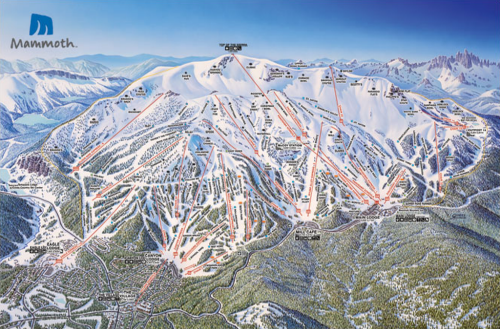 Once the skit resort has added their lift lines and trail markings to designate difficulty, the map takes on a more functional purpose but the painting and geometric symbols that overlay work in harmony. Text is applied to name different features and runs and the map has not only form but function.
Once the skit resort has added their lift lines and trail markings to designate difficulty, the map takes on a more functional purpose but the painting and geometric symbols that overlay work in harmony. Text is applied to name different features and runs and the map has not only form but function.
Painted panoramas give us a beautiful way of seeing a landscape. They also provide the backbone and a perfect canvas for this very specific type of recreational map. Niehues’ work sits at the peak of ski resort panorama mapping.
You can see much more of James Niehues’ work on his web site here.

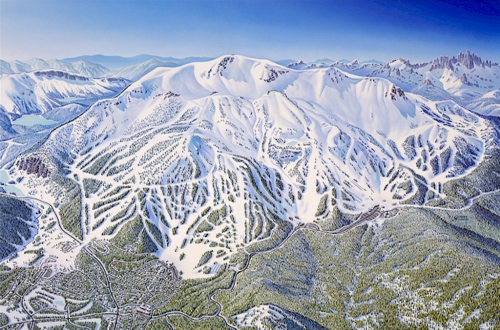
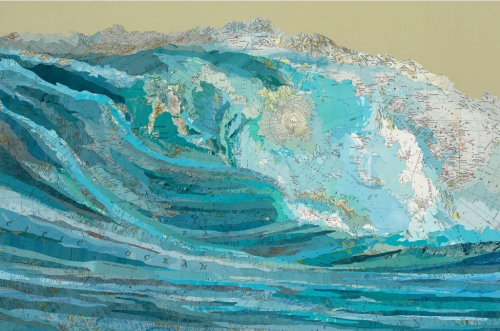
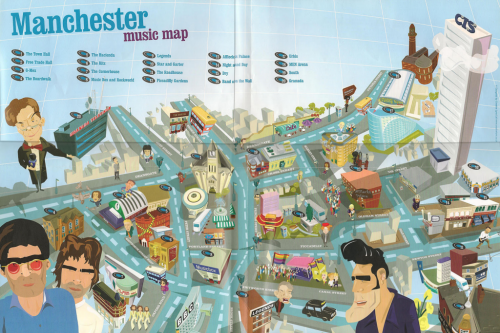
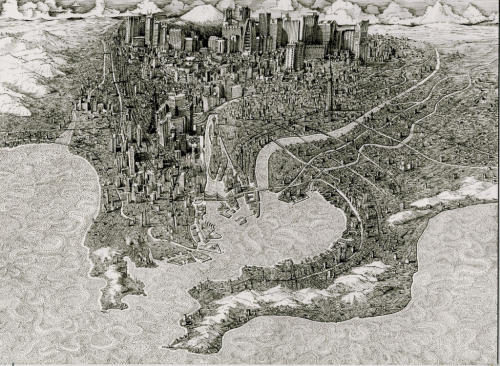
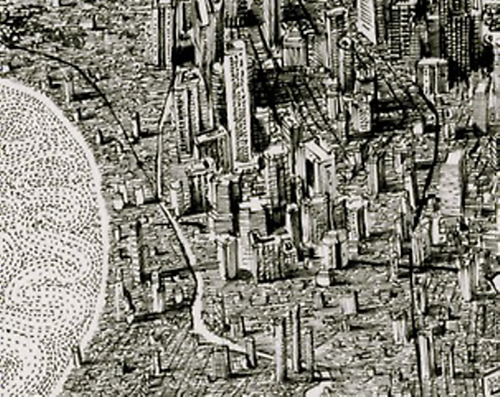
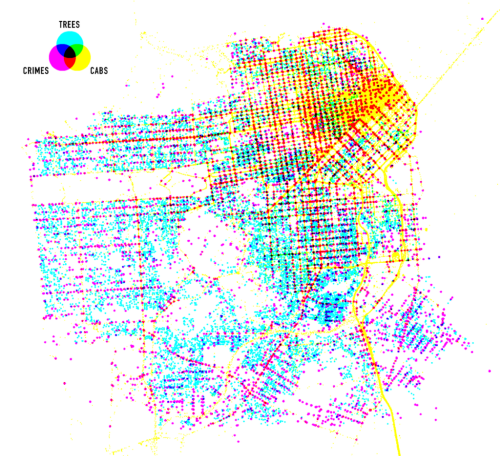
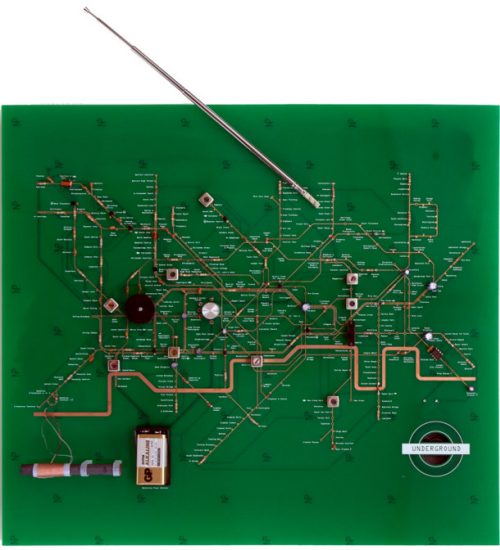

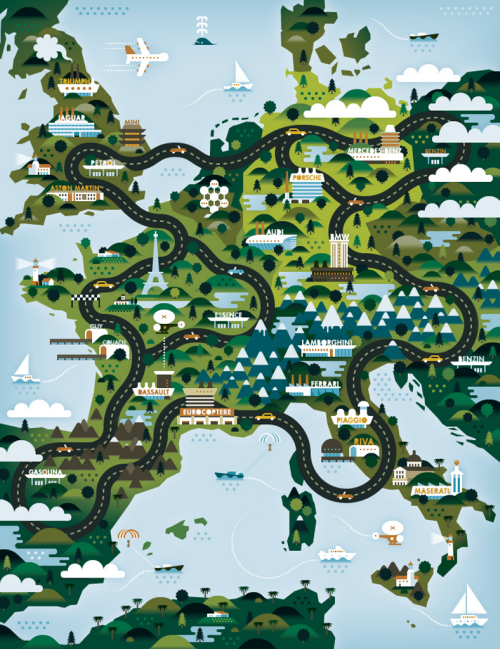

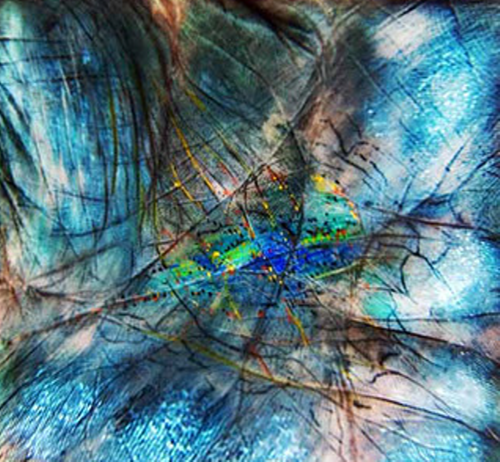 Knowing many of the individuals, the art does in fact do a good job of reflecting character. The descriptions make sense if you know a little of the background of the people and go a long way to explaining different cartographer’s take on…cartography. The way we make maps is a function of many things but there’s something very personal we all put into our maps…they reflect our own artistic and aesthetic abilities whether subconsciously or not.
Knowing many of the individuals, the art does in fact do a good job of reflecting character. The descriptions make sense if you know a little of the background of the people and go a long way to explaining different cartographer’s take on…cartography. The way we make maps is a function of many things but there’s something very personal we all put into our maps…they reflect our own artistic and aesthetic abilities whether subconsciously or not.
